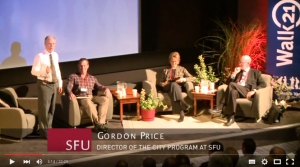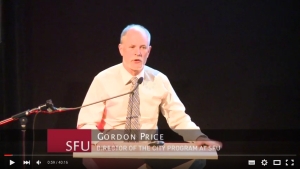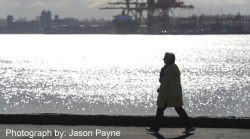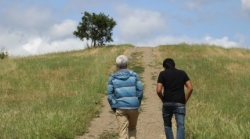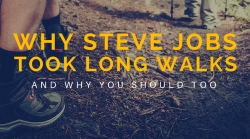Panel Discussion, moderated by Gordon Price, Director, The City Program, Simon Fraser University; Panel Members: Chris Vollan, Vice President, Development, Rize Alliance; Cynthia Melosky, Vice President, Development, Polygon Homes Ltd; Michael Geller, President, The Geller Group
All posts by admin
Janette Sadik-Khan in Vancouver: Shaking up the status quo
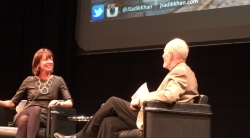 Janette Sadik-Khan came to Vancouver on March 24 with publicist Seth Solomonow to promote her new book “Streetfight”, a Handbook for an urban evolution. Janette is now working with Bloomberg Associates and bringing her strong urban placemaking skills to cities around the world. http://www.jsadikkhan.com/streetfight-the-book.html
Janette Sadik-Khan came to Vancouver on March 24 with publicist Seth Solomonow to promote her new book “Streetfight”, a Handbook for an urban evolution. Janette is now working with Bloomberg Associates and bringing her strong urban placemaking skills to cities around the world. http://www.jsadikkhan.com/streetfight-the-book.html
Sadik-Khan was the Transportation Commissioner for New York City from 2007 to 2013. She has a law degree from Columbia University and had a staff of 4,500 people with the New York City Department of Transportation. She is also a person that lets her staff do the right work instead of doing the work right. I had the chance to do some work with her staff in the Department of Transportation in 2009.
Sadik-Khan’s success in implementing new pedestrian spaces and installing protected bike lanes came about from her strategy of “trying things out”, doing demonstration projects in place on the streets, vowing to remove the projects if they were not successful. The projects were successful and they stayed.
With over 30,000 deaths in U.S. car accidents a year on 2.5 million miles of road, Sadik-Khan states that this kind of carnage would not be acceptable in any other profession. She describes the Manual on Uniform Traffic Control Devices as the “best clip art”. By using the devices contained in the manual, Engineers stay within the established parameters for road building and for their profession.
I have written an article on Price Tags about this noting that transportation engineers do not have to answer directly for crashes and accidents due to their street design. Staying with standardization there is no new innovation that can be learned and designed for a specific space. As long as transportation engineers stay within accepted national standards, they cannot be directly sued. The article is here: https://pricetags.wordpress.com/2016/03/05/are-street-designers-the-volkswagen-brand/
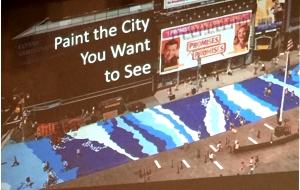 Sadik-Khan reimagined the city and her position, seeing herself as not the Commissioner of Traffic, but of Transportation, a much more holistic approach. She used road paint in DUMBO-(Down Under the Manhattan Bridge Overpass) to create a pedestrian plaza. People immediately used the space. With over 350,000 people using Times Square daily, Sadik-Khan did another pilot project, using street paint and folding beach chairs on a new pedestrian plaza space on the road surface. Sadik-Khan saw success of this temporary space when people talked about the beach chairs, and not the fact that the street was closed. The road paint to create plazas and the beach chairs can be replicated anywhere. The immediate impact in New York City was that sales in adjacent businesses increased 430 per cent with the redesign.
Sadik-Khan reimagined the city and her position, seeing herself as not the Commissioner of Traffic, but of Transportation, a much more holistic approach. She used road paint in DUMBO-(Down Under the Manhattan Bridge Overpass) to create a pedestrian plaza. People immediately used the space. With over 350,000 people using Times Square daily, Sadik-Khan did another pilot project, using street paint and folding beach chairs on a new pedestrian plaza space on the road surface. Sadik-Khan saw success of this temporary space when people talked about the beach chairs, and not the fact that the street was closed. The road paint to create plazas and the beach chairs can be replicated anywhere. The immediate impact in New York City was that sales in adjacent businesses increased 430 per cent with the redesign.
Using artwork and bench programs, and advocating for Vision Zero in transportation related deaths Sadik-Khan increased and enhanced the public realm for pedestrians and bicyclists. The name of her book “Street Fight” comes from her wish to shake up the status quo and see the street differently, not only being space occupied by vehicles. Alan Jacobs the writer of “Great Streets” also talks about the city streets as being the great place for innovation, as over thirty per cent of municipalities are roads, and these spaces can be redesigned to accommodate active transportation and pedestrians. https://mitpress.mit.edu/books/great-streets
I first heard Sadik-Khan speak in 2007 about her work in New York City and I was working with her staff in New York City when the first bike lanes-which were painted a vibrant emerald green-were installed. It was a sublime moment, seeing bicyclists and pedestrians explore the newly created spaces, with bicyclists enjoying separated lanes away from car traffic.
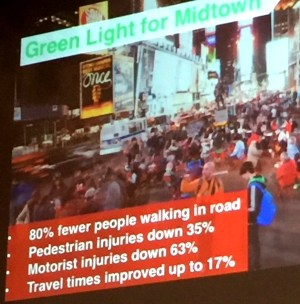 It is evident that Janette Sadik-Khan now perceives that planning and engineering have crested the hill, and are now meshing towards inclusion of pedestrians and bicyclists in 21st century road space and facilities.
It is evident that Janette Sadik-Khan now perceives that planning and engineering have crested the hill, and are now meshing towards inclusion of pedestrians and bicyclists in 21st century road space and facilities.
New York City has shown that creating more space for pedestrians and bicyclists does not lead to gridlock or disaster. Creating demonstration projects to get neighbourhood buy-in is now an accepted practice, and Sadik-Khan has shown this can be achieved in the biggest urban centre, New York City. Sadik-Khan states that it is important to demonstrate how a street can be used differently, test it, ensure that public space is sponsored for others to take care of it, and to look for ways to program it. She is a fan of Ciclovia, the South American Sunday closures of streets for bicyclists.
It is not a matter of IF we should be reimagining our roads for all users but when.
It is the 21st century approach to how to keep our cities and citizens moving in a sustainable and prudent way.
Sandy James
Vancouver Park Board increases access to green space with first pop-up park
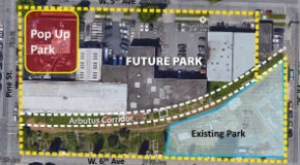 The Vancouver Park Board has approved a new temporary pop-up park in the Burrard Slopes area of Fairview neighbourhood to be completed by the fall.
The Vancouver Park Board has approved a new temporary pop-up park in the Burrard Slopes area of Fairview neighbourhood to be completed by the fall.
A concept plan for the park at the southeast corner of 5th Avenue and Pine Street was approved at a Board meeting last night. The park is located in the same block as the recently completed park at West 6th Avenue and Fir Street. more>>
Vancouver, A Walking Passion Story – The Little Metropolitan Area that Could
Vancouver, A Walking Passion Story – The Little Metropolitan Area that Could
Gordon Price, Director, The City Program, Simon Fraser University
City of Vancouver, CP Rail reach agreement on Arbutus Corridor
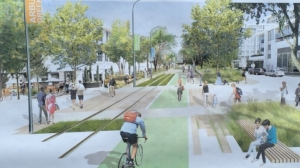 VANCOUVER (NEWS 1130) – The City of Vancouver and CP Rail have reached an agreement on the Arbutus Corridor lands.
VANCOUVER (NEWS 1130) – The City of Vancouver and CP Rail have reached an agreement on the Arbutus Corridor lands.
It will see the corridor turned into a shared pathway. The City is billing it as a way to connect parks and people. The City says there is also the possibility of a future light rail through the area.
The cost of the deal is $55 million. CP had once said the land value was $400 million. Read more at NEWS 1130>>
Visibility key factor in pedestrian accidents
There has been a high incidence of pedestrian injuries in marked crosswalks this winter. In response to the horrifying vehicular collision with a family walking across a marked crosswalk in Surrey B.C. the following interview took place on CBC “On The Coast” radio on February 3, 2016.
Most of the professional transportation studies indicate that visibility is the key factor in pedestrians being hit by vehicles on the road. In saying that, the professional studies do have a bias, in that civil engineers write them and others dedicated to making vehicular traffic flow smoothly, without the consideration of the pedestrian as an equal road user. When reviewing pedestrian accidents, there are three factors:
- Driver Behaviour;
- Driver Speed;
- Visibility.
As Neal Carley, one of the Directors of Walk Metro Vancouver notes we need to change our view of what and who uses the street rights of way.
In the 20th century the purpose of roads and rights of way was largely to move cars between two points. In the 21st century roads and their rights of way serve multiple uses for many purposes including items such as utilities, public realm, gathering places, green spaces, and street art, in addition to accommodating pedestrians, cyclists and cars.
How do we go about making streets safe, comfortable and convenient for all users?
Please listen to my interview below with Gloria Macarenko starting at 2:18:00:

And the Surgeon General Says
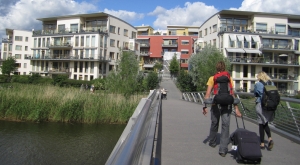 Here we are in a new year looking back at the most important highlights of 2015.
Here we are in a new year looking back at the most important highlights of 2015.
A lot has happened in the world of walkability and smart walkable communities. We are now seeing the connection between healthy living and wellness and walking every day in safe comfortable environments being directly tied into good town and city planning design.
In the Fall of 2015, The Surgeon General of the United States released a call to action that aims to promote walking and walkable communities. The call to action has five goals
- to increase people’s physical activity to improve overall physical and mental health;
- to make walking a national priority;
- to promote programs and policies supportive of walking where people live, play and work;
- to provide information to encourage walking and improve walkability;
- to research and evaluate the impacts of walking and the health of citizens.
In 2012, half the population of the United States, approximately 117 million people were living with chronic disease. 150 minutes of moderate activity or 70 minutes of intense activity can lessen the impact of disease and can improve physical and mental health. Simply put, twenty minutes a day of walking in your daily activities can make you a happier, healthier person.
The implications of such a national policy means that many cities and towns that are built around transportation by car must find ways to adapt to a more walkable way of life. This policy will have far reaching implications in the 21st century as engineers and planners look at including walkability as a vital piece of urban transportation.
The actual content of the call to action is below:
http://www.surgeongeneral.gov/library/calls/walking-and-walkable-communities/exec-summary.html
Walking for you, me and our future selves – the Walk Metro Vancouver Society
Walking for you, me and our future selves
– the Walk Metro Vancouver Society
Walk Metro Vancouver’s Focus
In 2015 Walk Metro Vancouver’s focus is on the importance of walkability for all ages. We want to hear from seniors’ groups in Metro Vancouver and have discussions on walkability-what is your experience, what your neighbourhood is like, and how we can assist you in enhancing your walkable places.
Walk Metro Vancouver recognizes that as seniors are encouraged to “age in place” and stay in their own homes longer, the ability to walk comfortably for connections and services is very vital.
For seniors to stay in their existing residences, walkable environments are essential to access services and shopping, and to happily participate in community life. A major study in Australia discovered that as seniors age, their reliance on walking as the major form of transportation markedly increases. Seniors in the study willingly walk up to one kilometer to access shops and services. Surprisingly young people also identify the one kilometer distance as the maximum distance for foot travel. For the most elderly, a fall on a sidewalk can result in an increased chance of death within six months-all the more reason to concentrate now on creating policies, plans and projects for the best universally walkable places now.
If streets and sidewalks and services are developed and designed for seniors, universal accessibility is achieved for everyone- from the baby in the buggy to the budding older boomer. The walking environment designed for seniors is also seamless for the young and for the disabled. Developing parameters and policy supportive of good walking environments for seniors embraces universal design for everyone no matter what age or walking ability.
Emerging housing policy for seniors is now emphasizing the importance of aging in place safely, comfortably and independently. The Seniors Advocate of British Columbia emphasizes that “Assisted Living” facilities will have a wider definition, and be descriptive of independent seniors housing, located close to shops and services. Walking is taking on a new role, that of an important transportation mode.
Statistics Canada has found that 28 per cent of seniors driving vehicles have a diagnosed dementia illness. A similar percentage are driving with limited mobility.
As more rigorous driving restrictions are enforced, independence can be maintained with walkable, workable networks.
Walking also lowers the incidence of over 41 diseases, increases physical fitness, enhances sociability, contributes to neighbourhood life, and strengthens community services. For seniors, the new “blue gym” is that easy walk outside in their neighbourhood.
How can we help?
We want to hear from you and learn with you what you need in your neighbourhood to adapt walking places to be safe, comfortable and convenient.
We can assist you in learning about the best practices for walkability, the how, what, why, and who, and help you with walkability audits and issue identification.
Many municipalities are embracing the World Health Organization’s Age Friendy City designation, which rewards cities that strengthen seniors’ policies addressing housing, transportation, outdoor spaces and buildings, community support and health, communication, civic participation and enjoyment, respect and social inclusion, and lastly social participation. All of these things need strong policy and projects around walkability to be achieved.
At Walk Metro Vancouver, we think universal walkability is vital, and we believe seniors can provide strong direction for the shape of our sidewalks and spaces.
Let us know what you think.
Please call Walk Metro Vancouver at 604 719 9412 anytime, or email.
Why Walking Meetings Can Be Better Than Sitting Meetings
Walking meetings are a kind of a big deal at LinkedIn. On any given day you can find workers strolling and talking together on the bike path at the company’s Mountain View, California, headquarters. The path takes about 20-25 minutes to circle — perfect for a half-hour one-on-one with a colleague.
The walk and talks have obvious benefits. Desk-bound office workers can all use a bit more exercise. Sitting too much is killing us. Yet the walking meeting’s upsides go far beyond the physical. Walking helps break down formalities, relaxes inhibitions and fosters camaraderie between colleagues — and less eye contact can fuel more personal conversation. Meeting on the go also minimizes distractions — no phones, no email, no texts, no colleagues interrupting you.
Why Steve Jobs Took Long Walks – and Why You Should Too
One day, when Marc Andreessen, the money man behind such tech giants as Facebook, Twitter, and Zynga, was out driving around his home in Palo Alto, California, he nearly hit a crazy old man crossing the street.
Looking back at the fool he had nearly run over he noticed the trademark blue jeans and black turtle neck. “Oh my god! I almost hit Steve Jobs!” he thought to himself.
Read the full article by Andrew Tate.

